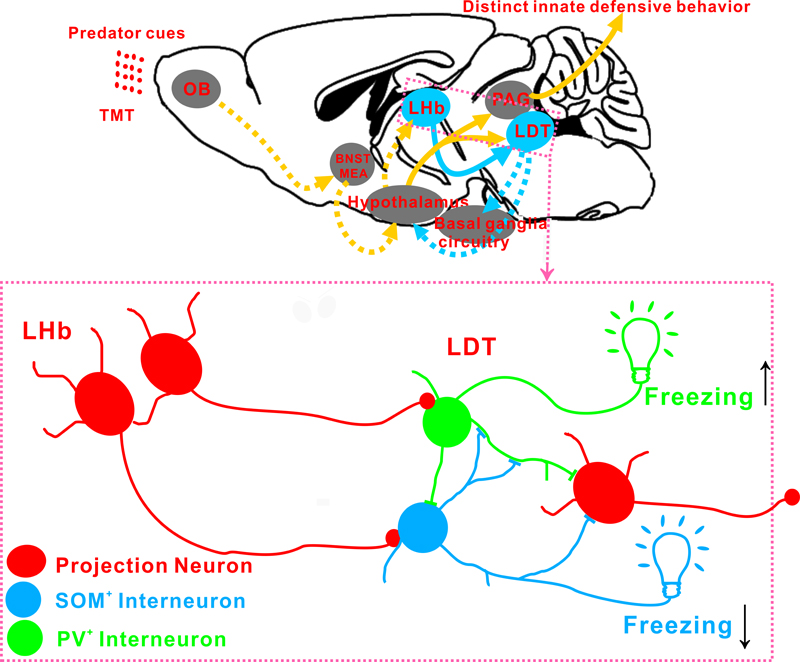A research conducted by the team of Prof. Shumin Duan and Hao Wang from Institution of Neuroscience, School of Basic Medical Sciences discovered new circuit mechanisms for innate fear. This finding was published in Nature Neuroscience on Jan 4th, 2016. Innate fear plays a critical role in survival and heath for all species, including human being. This intense emotion induced by a perceived threat through sensory stimuli is vital for animals to avoid danger, thus could survive. On the other hand, abnormal fear such as phobia is highly associated with anxiety and depression disorders. The features of heritability and natural acquisition distinguish innate fear from conditioned fear. The former is innate while the latter requires previous experiences. Unlike conditioned fear, the neuronal circuitry underlying innate fear is largely unknown. The team led by Shumin Duan and Hao Wang employed optogenetics, behavioral assays and retrograde rabies virus tracing techniques, and they found that projection from the lateral habenula to the laterodorsal tegmentum plays a key role in the olfactory cue-induced innate fear in mice. Furthermore, they found two interneuron subtypes (PV+ and SOM+) antagonistically regulated fear responses. These results provided a potential target for therapeutic intervention for anxiety and depression disorders.
Drs. Hongbin Yang and Junhua Yang are co-first authors of this paper. This study was supported by grants from the National Natural Science Foundation of China and Major Research Program of Ministry of Science and Technology of China.
